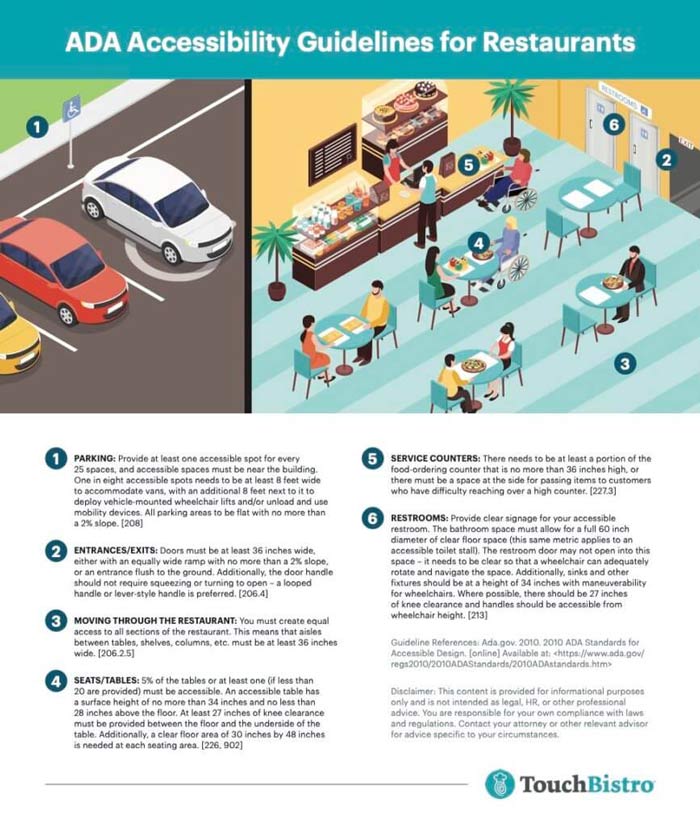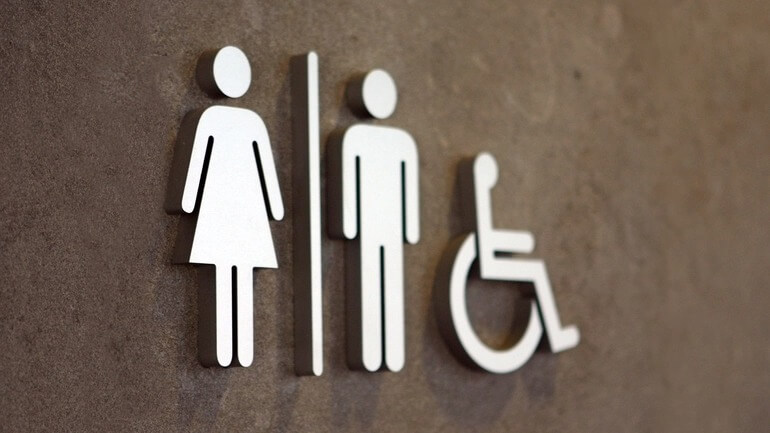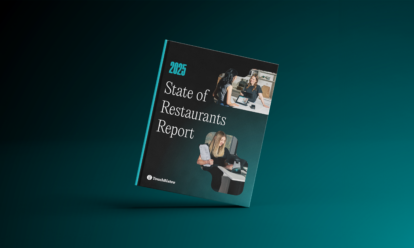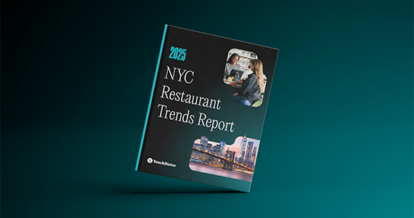Running a restaurant is about providing guests with hospitality. The Americans with Disabilities Act (ADA) provides enforceable restaurant accessibility guidelines to ensure food service establishments and other businesses are offering a hospitable environment to all customers.
The ADA is a win-win for the disabled and restaurant communities. It helps you serve guests of all abilities in the same way so that they keep coming back again and again. After all, the more accessible your restaurant, the more people you can serve.
While these are the perks to adhering to ADA guidelines for restaurants, there are also serious consequences to disregarding these federal regulations. Your first ADA violation could result in a fine of up to $75,000. You’ll owe up to $150,000 for additional violations.
Fortunately, you don’t have to read hundreds of pages of legalese to make your restaurant a welcoming place for all guests. We’ve created this restaurant accessibility guide to give you a basic understanding of how to comply with these important regulations.
Keep reading to learn:
- What the Americans with Disabilities Act (ADA) is
- ADA restaurant accessibility guidelines
DISCLAIMER: This content is provided for informational purposes only and is not intended as legal, HR, or other professional advice. You are responsible for your own compliance with laws and regulations. Contact your attorney or other relevant advisor for advice specific to your circumstances.
What is the Americans with Disabilities Act (ADA)?
The Americans with Disabilities Act (ADA) is a set of regulations that prevents the discrimination of disabled people. The ADA originated in 1990 and was updated in 2010 to clarify some of its original guidelines.
According to the ADA, a disability is a “physical or mental impairment that substantially limits one or more major life activities of such individual.” That means someone who relies on a wheelchair for mobility, is blind or has low vision, is deaf, or relies on a service animal can be considered disabled, for example.
The ADA defines the accommodations needed to be made to ensure that disabled people can access employment, public services, public accommodations, services provided by private entities, and telecommunications.
You can read the text of the ADA here.

ADA Restaurant Accessibility Guidelines Checklist
Title III of the ADA applies to restaurants, as it explains how commercial facilities need to design their facilities to meet federal accessibility standards. This section of the ADA covers topics like ease of access to entry, movement, and access to services. It makes it illegal to segregate people with disabilities from other customers.
Enforcement of the ADA for restaurants and other public accommodations falls under the jurisdiction of the U.S. Department of Justice (DOJ). In order for a restaurant to receive a violation, someone needs to file a complaint through the DOJ.
Follow this checklist of the ADA’s restaurant accessibility guidelines to jump-start your compliance journey.

- ADA Seating and Accessibility Requirements for Restaurants
When it comes to mobility and seating for disabled guests, you have to think about providing accessible entry, bathrooms, and seating, as well as ample space to get around.
Entrances and Exits
- Facilities must provide a stair-free entrance option.
- If a ramp is provided, it must have a maximum slope of 1 inch of elevation for every 12 inches of length.
- If a ramp is provided, it must have railings on both sides, placed at a height of 34-38 inches, and it must be at least 3 feet wide.
- If no ramp is provided, a lift must be provided.
- A service entrance should be the last resort for an accessible entrance.
- Facility must have signage that points to the accessible entrance.
- Doorway must be at least 36 inches wide.
- Doors must have 18 inches of approachable space next to them for a wheelchair-accessible restaurant.
- Manual door must have a handle that’s no higher than 48 inches off the ground.
- Manual door must have a handle that can be opened with a closed fist.
- Manual door must not be too heavy to open (must require less than 5 pounds of force to open).
- Automatic doors must take at least three seconds to close.
Mobility Throughout the Restaurant
- You must create equal access to all sections of the restaurant, including outdoor spaces like patios. This means that aisles between tables, shelves, pillars, etc. must be at least 36 inches wide.
- Items have to be within 27 inches off the ground for people with canes to detect them.
- Overhead items need to be at least 80 inches off the ground to avoid injury.
- Carpets and rugs must be no thicker than ½ inch.
- No tripping or slipping hazards allowed.
ADA Restaurant Table Requirements
- Wheelchair spaces must be made available throughout the premises.
- ADA restaurant table requirements state that 5% of tables or at least one (if less than 20 are provided) must be accessible.
- Tables must be between 28 and 34 inches tall.
- There must be adequate space for knees below the table (27 inches high, 30 inches wide, and 19 inches deep) to ensure a wheelchair-accessible restaurant.
- A clear floor area of 30 inches by 48 inches is needed at each seating area to meet ADA seating requirements for restaurants.
- There needs to be at least a portion of the food-ordering counter that is no more than 36 inches high, or there must be a space at the side for passing items to customers who have difficulty reaching over a high counter.

Accessible Restrooms
- If there is only one bathroom, it must be accessible.
- Provide clear signage (with images and Braille) for your accessible restroom.
- The bathroom doorway must be at least 32 inches wide.
- The bathroom space must allow for a full 60-inch diameter of clear floor space (this same metric applies to an accessible toilet stall) for a wheelchair-accessible restaurant.
- The restroom door may not open into the stall – it needs to be clear so that a wheelchair can adequately rotate and navigate the space.
- Sinks and other fixtures should be at a height of 34 inches with maneuverability for wheelchairs.
- Where possible, there should be 27 inches of knee clearance and handles should be accessible from wheelchair height.
- Doors must have handles that can be operated with a closed fist, and don’t take too much force to open.
- Railings must be installed around accessible toilets.
- Toilet seat height must be between 17 and 19 inches.
- Faucets must be able to be turned on with a closed fist.
- Soap, paper towels, and dryers must be placed at an accessible height and able to be used with one fist.
- Restaurant Accessibility Guidelines for Accessible Parking
- Provide at least one accessible spot for every 25 spaces.
- Accessible parking needs to be the closest parking to the accessible entrance.
- Accessible spots must be 13 feet wide: 8 feet for the car and 5 feet for an accessibility aisle.
- One in eight accessible spots needs to be wide enough to accommodate vans (either 11 feet wide, or 8 feet wide with an additional 8 feet of adjacent space for a lift).
- All parking areas must be flat with no more than a 2% slope.
- Restaurant Accessibility Guidelines for Items and Resources
Here’s what the ADA says about the accessible design of menus and websites.
Build an Accessible Website
Section 508 of the ADA sets laws for restaurant website design accessibility, including:
- Alt text must be provided for every non-text element on the website.
- Page elements presented in color also have a non-color alternative.
- Forms need to be accessible to assistive technologies.
Design Accessible Menus
While the ADA doesn’t have requirements for making menus accessible, making accommodations will help you serve guests better.
For guests with low vision, offer a Braille menu, or one that has high contrast and large font. A digital menu can be a good option. Encourage servers to read menus to guests who need assistance.
For guests with poor hearing, make sure servers have a written way of communicating with them if they don’t know American Sign Language.
In all cases, conduct disability awareness training with staff so they can be prepared to proactively accommodate all kinds of guests.
- Restaurant Accessibility Guidelines for Sensory Issues
According to Title III of the ADA, “a public accommodation shall take those steps that may be necessary to ensure that no individual with a disability is excluded, denied services, segregated or otherwise treated differently than other individuals because of the absence of auxiliary aids and services.”
Restaurants, therefore, can help accommodate guests with sensory issues, such as blindness or deafness by:
- Offering menus in Braille.
- Turning on captions on TVs found in the restaurant.
- Offering large print menus.
- Creating a calm environment for guests with autism or neurodivergence.
- Providing staff with disability awareness training.
- Service Animals at Restaurants
Service animals are allowed in restaurants. According to the ADA, a service animal is “any dog that is individually trained to do work or perform tasks for the benefit of an individual with a disability, including a physical, sensory, psychiatric, intellectual, or other mental disability.”
For an animal to be a service animal, it must:
- Be a dog, and
- Perform tasks that are directly related to the handler’s disability.
A service animal must:
- Remain under the control of its handler at all times, and
- Be allowed to go anywhere the public is allowed to go.
A restaurant can have a no pet policy, but because service animals are not considered pets under the ADA, these dogs are allowed to accompany their handlers. Emotional support animals are not considered service animals.
Restaurant employees are allowed to ask the following questions to make sure animals entering the premises are service animals:
- Is the service animal needed due to a disability?
- What tasks has the service animal been trained to perform?
If the ADA contradicts local laws about animals in food service facilities (such as from the health department), you should obey the ADA because as a federal law, it supersedes local regulations.
ADA Tips for Restaurants

Now you understand some of the basic guidelines for restaurant accessibility. Follow these tips to make ADA compliance simpler to implement and maintain:
- Understand the rules and the consequences. This guide is just an abridged cheat sheet to the ADA guidelines for restaurants, but it’s not an exhaustive list. We encourage you to read the regulations to be fully informed. Not knowing an ADA rule doesn’t exclude you from getting a violation. ADA violations can be as high as $75,000 for a first offense, and up to $150,000 for further offenses.
- Consult a lawyer. Reading legalese is difficult and frustrating. Consult a legal professional before opening your restaurant, or after receiving an ADA violation, to ensure you’re not missing anything that can bar access from your restaurant.
- Follow a checklist. Ask a legal professional to provide you with a checklist you and your team can use to ensure ADA compliance whenever you make changes to your space, such as when rearranging your restaurant’s floor plan. Include the checklist in your restaurant’s training manual.
- Give staff disability awareness training. Train staff on ADA rules and how to provide great customer service to all guests. Look for a training program that can help your team put themselves in the shoes of guests with disabilities.
- Go above and beyond. Do more than the bare minimum to make all guests feel welcome all of the time.
Hospitality is an important part of running a restaurant. The regulations outlined in the Americans with Disabilities Act are designed to help you create an inviting environment for each and every one of your customers.
Free Restaurant Cleaning Checklist
Sign up for our free weekly TouchBistro Newsletter







